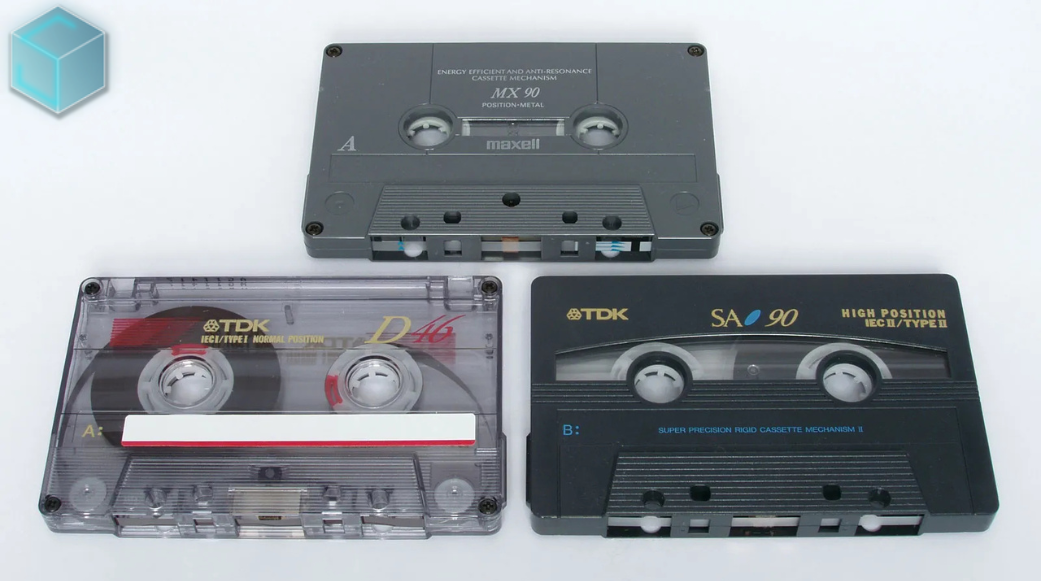
October 23, 2025
Discover how Mix Master strengthens your brain just like an instrument - training focus, creativity, and emotional intelligence through the science of sound.
Read more.png)
September 8, 2025
Tools like Suno are now powerful enough to generate melodies, lyrics, and even full songs in seconds. That’s exciting—and controversial. Just ask Timbaland. Recently, he came under fire..
Read more
August 23, 2025
The 1980s and 1990s analog music medium known as cassette cassettes is experiencing an unanticipated comeback, with Gen Z spearheading the trend. Taylor Swift, who included cassettes in the release...
Read more
August 23, 2025
This week's most notable headline: Doja Cat's erotically charged, '80s-inspired music video, "Jealous Type," is dominating social media feeds and cultural discourse, marking her most daring...
Read more
August 23, 2025
J-hope and GloRilla's "Killin' It Girl," a spectacular blend of K-pop flare and shameless hip-hop heat that has taken the world by storm, is this week's winner of the Best Collaboration of Summer...
Read more
August 23, 2025
Carly Rae Jepsen is giving fans the ultimate gift for the 10th anniversary of her critically adored album Emotion: a special edition featuring four never-before-heard tracks and two fresh remixes...
Read more
August 23, 2025
The wait is over, ARMY! BTS is officially back together and balancing work and play in their first moments of reunion after completing mandatory military service. J-Hope sent fans into a frenzy...
Read more
August 23, 2025
Christian music stepped outside of its quiet comfort zone in 2025. "Hard Fought Hallelujah," a worship song by Brandon Lake, went platinum, sold out festival stages, and exploded from churches to...
Read more
August 23, 2025
In late July 2025, Christian artist Forrest Frank (of Surfaces, now a solo juggernaut in faith-pop) posted from a hospital bed: he’d fractured his L3 and L4 vertebrae in a skateboarding accident...
Read more
August 21, 2025
On September 16, the masked metal phenomenon Sleep Token will embark on their 2025 "Even In Arcadia Tour" across North America. The 18-show tour, which includes a huge date at Brooklyn's Barclays...
Read more
August 21, 2025
Due to a line dance that went viral and won over fans' hearts both inside and outside of the United States, 22-year-old Tre Little's song "Boots on the Ground" has become a cultural sensation this...
Read more
August 21, 2025
In addition to preparing for her next album, The Life of a Showgirl, Taylor Swift is reviving the physical medium this week by putting her songs on cassette tapes. This sentimental action...
Read more.png)
One common frustration in vocal production, especially for home studio and bedroom producers, is encountering static noise in the high frequencies after compressing and brightening vocals. You might start with a darker-sounding vocal recording and use compression and EQ to make it more present, only to find that unwanted noise becomes noticeable, especially in the "air" frequencies (around 10 kHz and above).
This issue can be discouraging, but it's a fixable problem. In this article, we’ll explore why this happens and offer practical solutions to manage it, using techniques from both home recording setups and professional studios. Plus, we'll look at how famous music creators have faced and overcome similar challenges.
Boosting high frequencies to add "air" and clarity to vocals can also amplify unwanted noise. There are a few reasons why this happens:
Recording your vocals at an optimal volume is essential. Aim for levels that are strong but not peaking. A common issue with static arises from recording vocals too quietly and then compensating later by boosting the volume. By recording at a higher volume, you'll reduce the need for excessive post-processing, which could amplify noise.
If static noise is persistent in certain parts of the vocal take, a noise gate can help. It works by cutting off sound below a certain threshold, eliminating quiet background noises when you aren’t singing. A de-esser can also tame harsh frequencies, especially around the "s" sounds, which are often boosted when high frequencies are amplified.
Ensure that all your equipment—microphone, cables, interface—are functioning properly and not introducing noise. Sometimes, upgrading your cables or using balanced cables can reduce interference. Additionally, make sure your microphone is not picking up any hum from nearby electronics or poor grounding.
Instead of heavily boosting the high frequencies to brighten the vocals, consider more subtle adjustments. Sometimes, boosting too much can reveal noise that would otherwise be masked. Use dynamic EQ to only boost certain frequencies when necessary, avoiding constant emphasis on the highs.
If compression is causing the static to become more noticeable, try using multiband compression. This will allow you to compress different frequency ranges separately, so you can avoid applying too much compression in the high-frequency range where the noise resides.
Improving the acoustics in your recording space can significantly reduce background noise. Using absorbent materials like foam panels or heavy curtains can help, but for a quick solution, recording vocals in a closet filled with clothes or placing a blanket over the microphone stand can reduce reflections and noise.
Billie Eilish and her brother Finneas O’Connell are known for recording vocals in their bedroom studio. Despite the non-ideal environment, they’ve mastered vocal clarity by using careful mic placement, subtle EQ, and noise reduction techniques. In their hit "Ocean Eyes," they used multiband compression to control the dynamics of the vocals, especially in the high frequencies, while keeping them smooth and free of static noise.
Static noise in high frequencies can be a frustrating problem, but with the right techniques—such as proper gain staging, noise reduction, and careful use of EQ and compression—you can achieve clean, professional-sounding vocals even in a bedroom studio. Remember that many professional artists and producers, like Billie Eilish and Finneas, have faced similar challenges and overcome them with a combination of creativity and technical know-how.
By refining your recording and mixing techniques, you can bring out the best in your vocals without the unwanted static.